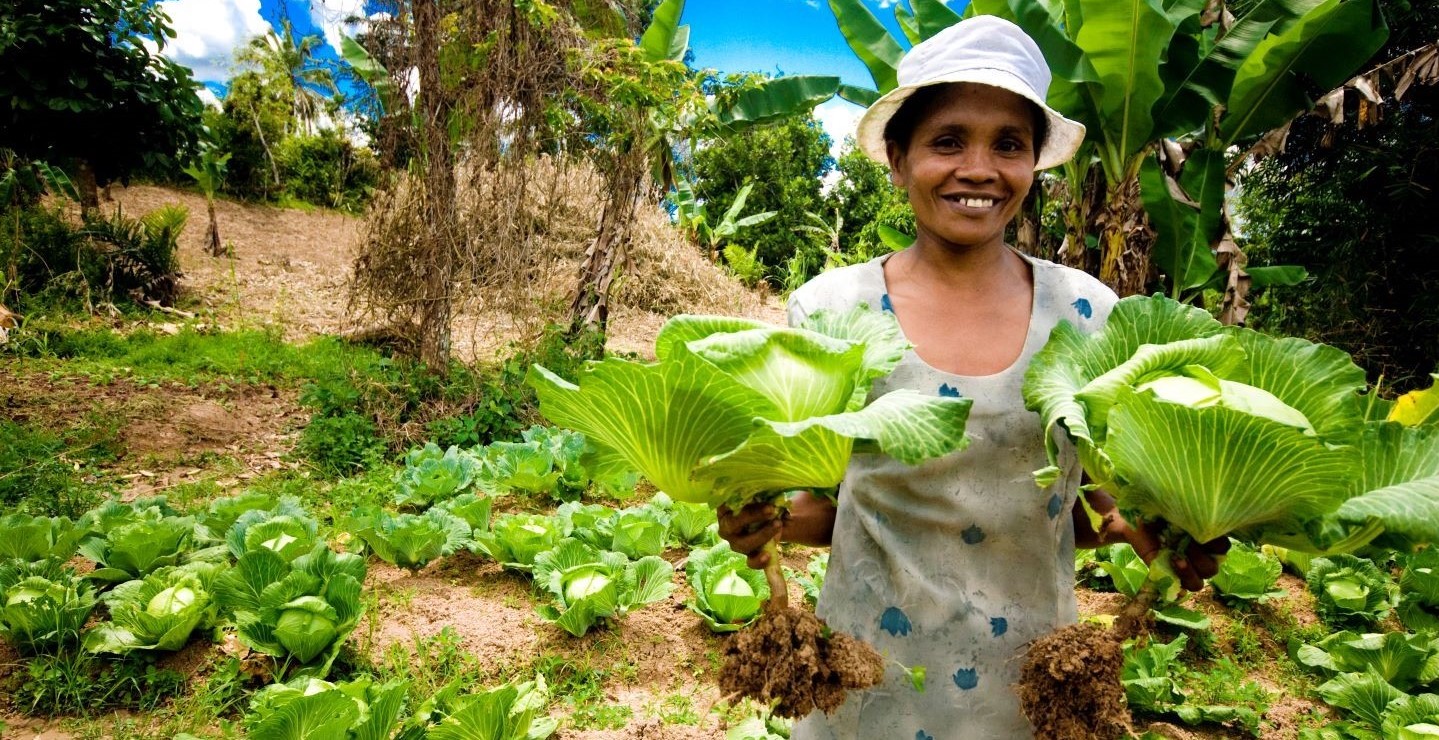Re-imagining food systems through the climate–nutrition nexus
IFAD Asset Request Portlet
Asset Publisher
Re-imagining food systems through the climate–nutrition nexus
Estimated reading time: 3 minutes
The food we eat plays a role in not just our health, but that of our descendants. How we grow, hunt, fish or gather it, how we process it and bring it to market, affects the world around us. These simple relationships are the foundation of the climate–nutrition nexus.
The climate–nutrition nexus
Climate change is already affecting the food security of millions of people. Extreme weather events such as floods, storms or droughts can destroy crops and infrastructure, while long-term effects such as changing rainfall patterns, melting glaciers and rising temperatures change the quality and quantity of water available. As carbon dioxide in the air increases, the nutritional value of many staple crops declines. It is estimated that climate-related dietary changes will contribute to an additional 500,000 deaths a year by 2050.
Conversely, the ways food is produced, processed, and transported to our dinner plates also have immense effects on climate change. The world’s food systems are responsible for a third of the greenhouse gas emissions that are warming the planet. The ways we produce food also alter our relationship to the natural world. For example, many of our activities contribute to the spillover of zoonotic diseases – of which COVID-19 and Ebola are both examples – from wild animals to humans.
Meeting these interlinked global challenges will require nothing less than a transformation of our food systems. Through nutrition-sensitive, climate-smart interventions, we can start to shift our food systems to nourish both the planet and the people who inhabit it.
Optimizing solutions for local contexts
Today, about half of the calories consumed globally come from small-scale producers. These producers (farmers, fishers, indigenous peoples, pastoralists, rural women), and the processors and markets they work with, must be supported to provide high-quality nutrition for themselves and for consumers, all while helping them adapt to a changing climate and protecting biodiversity.
IFAD and the Wageningen Centre for Development Innovation recently held a dialogue in the run-up to the Food Systems Summit. The event brought together experts from academia, government, civil society and development agencies to discuss the benefits and trade-offs of climate–nutrition interlinkages and how these could be integrated into the design and implementation of rural development projects.
Together, we looked at three case studies from countries where the complex linkages between nutrition and climate change come to the fore, and examined different pathways to integrate the climate–nutrition nexus.
In Ghana, the researchers found that simply improving the quality and quantity of produce did not improve household nutrition, as many small-scale farmers tend to sell their entire harvest and buy lower-quality foods for home use. Moreover, households that relied on their own crops tended to eat a less diverse diet.
This suggests a need to improve knowledge and provide technical inputs to farmers to help them grow and consume a variety of nutritious foods, and to empower women, who are key to household dietary decision-making as well as food processing and marketing. Small-scale farmers also need supportive structures that strengthen links between farms and markets, such as financial services and access to land and multi-stakeholder partnerships.
In Lesotho, nearly a third of rural dwellers are severely food insecure. The country is very vulnerable to climate change, and recurrent droughts have already led to sharp reductions in agricultural production. Existing food systems do not provide accessible, healthy and affordable diets. While this is partly due to consumer behaviour, the major reason is the unaffordability of nutritious food.
Here, cash transfers and helping farmers improve their home gardening efforts have been shown to lead to climate-smart agricultural production, greater food security and improved conditions for poor families.
In Zimbabwe, about 70–80 per cent of agriculture is rain-fed, and decreased yields or crop failures can occur with changing rainfall patterns. Although women make up 70 per cent of the agricultural workforce, they are especially vulnerable to malnutrition, financial insecurity and climate-related impacts.
Here, the establishment of a nutrition-sensitive, climate-smart food system will depend on policies that promote gender transformation within the value chain, thereby ensuring women’s participation and increasing their capacity to adapt to climate change.
The need for transformative actions
Soon, representatives from the major sectors involved in agriculture – government, civil society, academia, and of course the farmers themselves – will gather for the Food Systems Summit to discuss how these systems can be transformed to ensure sustainability and provide quality nutrition for all. The COP26 summit will follow shortly after. It is clear that now is the right time to begin re-imagining our food systems through the lens of the climate–nutrition nexus.
By working holistically – across sectors to develop integrated food and climate policies, and along the entire food system from producer to consumer – we can achieve real progress towards the climate commitments of the Paris Accords, and the global goal of zero hunger.
Publication date: 23 September 2021